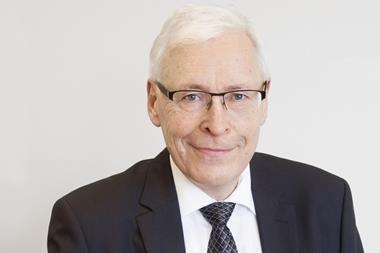The problems in European pensions are structural, Paul Audu, head of investments at the London Borough of Hackney £500m (E790m) pension fund told the North European Pensions & Investing conference in Copenhagen last month.
“Wide ranging reforms are needed – the pensions market in Europe is incoherent due to differences in approach. We need more harmonisation in all the changes,” he said.
His comments were echoed by Desmond MacIntyre, head of European pension strategies at Deutsche Asset Management who said: “The European pensions jigsaw would be very difficult to put together.”
Picking up on trends, he pointed to the move to defined contribution (DC) both in the UK and the rest of Europe. “The new international accounting standards, adapted from the rules of FRS17 in the UK, meant that funds would have to measure liabilities and surpluses on a mark to market basis. There can no longer be any actuarial smoothing.”
The reaction of some of the largest schemes was to move to a DC – “this is now a trend”. But he warned that figures from the US showed that there were fundamental concerns were emerging about who is paying for the pension promise, showed the additional costs of the move to DC from DB could mean a difference of 150 to 200 basis points each year. “Employees were going to turnaround to employers and say that they were going to hold them responsible.” He added, “Lifstyle options do give some cross asset exposure in a controlled way.” But he also acknowledged that “transferring to DC was fraught with challenges”.
MacIntyre went on to say that some of the DB plans with surpluses built up over the good times were looking at ways of locking them in. Others had used their surpluses to take contribution holidays and he mentioned the case of a company which had used its surplus in this way, but was now worried about bankruptcy arising from the impact of market volatility on its pension fund.
Another trend he pointed to in the US was for “consultants to take over complete responsibility for asset management in outsourcing deals.” He applauded their move.
“Who manages the asset allocation process at your fund?” asked Mark Cathcart of Goldman Sachs in New York. “If this is not managed carefully, you can end up increasing risk in the portfolio, but if this is done properly it can add value.”
The perception has been that tactical asset allocation does not add value, but he said the situation was more positive with global tactical asset allocation (GTAA).
He warned that without rebalancing each month: “If you do not do this there could be a drift in the in the underlying assets which could contribute to underperformnce.” GTAA could be a completion and rebalancing strategy, which could add value.
The value of tactical asset allocation was endorsed by a subsequent speaker, Gerry Holtham of Morley Fund Management in London, who acknowledged when building and running global portfolios that tactical asset allocation was a more difficult process to do successfully than stock selection.
“But TAA returns are not lower in quality than than stock selection returns,” he said.
In building a global portfolio should the manager have a centralised approach or aggregate regional portfolios, he asked. “We are working towards a centralised approach.”














No comments yet